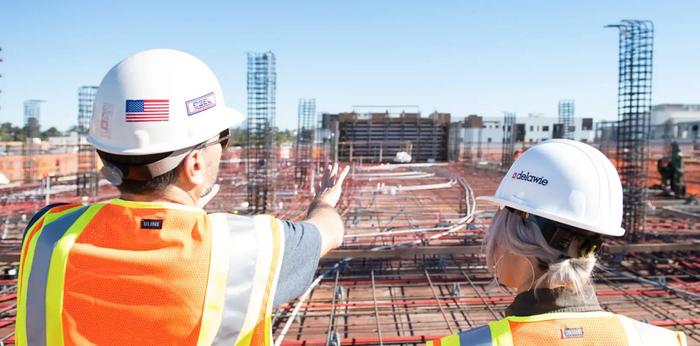It's an all-too-familiar scene in the construction industry — a project starts with a clear budget and timeline but, somewhere along the line, costs begin to creep up. Before you know it, costs are out of control and your profit is non-existent.
Construction projects are complex by nature, with a seemingly endless number of moving parts. Pinpointing and preventing overruns might seem impossible, but the good news is that you can minimize their damage.
By adopting proactive strategies to prevent overruns and a structured approach to tackling overruns, you can keep costs under control.
This article will delve into the reasons for cost overruns in construction and the strategies you need to keep your projects on track and within budget.
The real-world implications of cost overruns in construction
Cost overruns create a ripple effect, touching every part of a construction business.

It's not just a line item on a budget sheet; it's an issue that can seriously affect your business.
Reputation
A good reputation is priceless in business, regardless of your industry. Regularly overshooting your budget creates a bad impression. A construction company that can't keep control of its costs will appear inefficient. Worse still, it could indicate a lack of expertise and overall poor management.
Whether it's new clients assessing your track record or previous clients thinking about renewing a contract, a history of cost overruns is a significant red flag. Even if your work itself is exceptional, a reputation for going over budget might prevent you from winning future contracts.
Relationships
A budget is more than just a financial plan; it's a promise. Cost overruns strain important relationships, not only with clients but also with subcontractors, suppliers and your own team.
Repeated cost overruns might lead stakeholders to believe that the firm is either incapable of sticking to financial commitments or isn't transparent in its dealings. This can lead to difficulty in securing contracts, renegotiating terms or retaining top talent.
Finances
The bigger the overrun, the less profit you make. While construction companies can absorb the occasional overrun, consistently going over budget on projects will inevitably lead to cash flow issues.
In turn, poor cash flow makes it harder to pay suppliers and secure future projects. Simply managing day-to-day operations can get stressful. Over time, this can jeopardize the long-term health of the business.
Legal repercussions
If cost overruns lead to contractual breaches, then there's the potential for legal action. This can lead to hefty penalties and irreparable damage to a company's reputation.

Even if you manage to overcome any legal challenges, the process can tie up valuable resources and take your focus away from your actual business.
Understanding the root causes of cost overrun
Before you can prevent cost overruns, you need to understand why they happen in the first place. By pinpointing the root cause of your cost overruns, you can implement systems and strategies to mitigate them.
Let's take a look at the key culprits that most often lead to cost escalation in construction projects.
Inaccurate estimates
The foundation of any construction project is the initial estimate. If your estimates are too far off, then you set the stage for budget overruns from the start.
This usually comes down to insufficient research. It can be tempting to base your numbers on back-of-the-napkin math, but it's worth taking the extra time to put together an accurate approximation.
While past work can give you a good idea of how much future projects might cost, don't make the mistake of thinking every job will be the same. Consider the unique needs and challenges of each project.
Project creep
No matter how well you plan, a project's scope will commonly expand beyond its initial parameters. This phenomenon, known as “project creep”, occurs for various reasons.
For example, as the project progresses, clients might request additions or modifications not accounted for in the original budget. You might also face unexpected obstacles, like subpar conditions or environmental issues that weren't identified during the initial assessments.
Price fluctuations
Prices change all the time, but the impact can be particularly extreme in the construction industry. The volatile nature of prices for materials and labor can easily throw off any budget calculations.

Seasonal demands or global events can cause surges in prices for key materials like steel, wood or concrete. For example, Gordian reports that 82.5% of construction materials in their database increased in 2022 by an average of 19%. Similarly, supply chain disruptions might mean you need to change to a more expensive supplier at the last minute.
Poor project management
Effective project management is the backbone of any successful construction project. Without it, cost overruns can quickly add up. Commons issues that can derail your project include:
- Inefficient resource allocation. Suboptimal deployment of manpower, machinery or materials leads to wastages and increased costs.
- Inadequate communication. Miscommunications between teams, clients and suppliers can result in errors and delays, all of which inflate costs.
- Insufficient oversight. A lack of regular check-ins, updates and reviews can mean budget overruns aren't identified and addressed promptly.
By understanding these root causes, construction companies can start the process of fortifying their operations against potential overruns.
Try Capsule CRM free for 14 daysGet started
Top strategies to prevent cost overrun in your construction projects
Here are some top-tier strategies to help you keep your construction projects within budget.
It all starts with a plan
Begin with a thorough analysis and consider every potential cost. From material requirements to potential legal permits, get feedback from experienced team members or external consultants to ensure nothing is overlooked.
Remember to account for the unknown. Identify areas that could potentially lead to overruns, be it certain suppliers, project sections or external factors. Always allocate a portion of the budget (typically 5-10%) for any potential unforeseen expenses. This ensures that unexpected costs don't lead to overruns.
As the project progresses, assess the contingency fund to determine if it's adequate or if adjustments are needed.
Embrace technology
If you're still planning your construction projects using pen and paper, then you're putting yourself at a disadvantage.
Dedicated project management software can help you track expenses, timelines and resource allocation in real time. Modern estimation tools can factor in historical data, market trends and predictive analysis to give more accurate figures.
Customer relationship management (CRM) systems will help you manage the client side of things, tracking communication and collating project details to ensure that everyone is on the same page.
For example, Capsule is designed to help construction companies manage their projects, create customized solutions for clients and improve their sales process.
Discover more about how a CRM for construction can improve client management and reduce cost overruns.
Encourage open communication
The vast majority of cost overrun issues could be prevented with better communication. When your teams regularly report their progress and expenditures, you're more likely to identify any potential overruns in advance.

Likewise, keep clients informed and involved throughout the project. Let them know of any changes to the plan and encourage them to do the same with you, ensuring their requests are evaluated at the earliest opportunity.
Lock in prices whenever possible
Get ahead of any potential price changes by purchasing materials in bulk and establishing long-term contracts with suppliers. Where possible, opt for fixed-price contracts to ensure price consistency, especially in volatile markets or with new suppliers.
Challenges are inevitable in this industry, but being prepared and having a game plan ensures you're not caught off-guard, protecting both your profit margins and your reputation.
Tackling cost overruns when they happen
Even with the most meticulous planning and proactive strategies, there are times when cost overruns are simply unavoidable. When confronted with such situations, your response will make all the difference.
Here's a step-by-step guide to navigating cost overruns in construction projects.
1. Acknowledge the problem
The first step is to accept and acknowledge the issue. Brushing it under the carpet or hoping it'll somehow go away by itself will only exacerbate the situation. This might mean some unpleasant conversations with your clients and suppliers, but it's better to inform them promptly so you can start working on a solution.
2. Evaluate the situation
Act quickly to identify the specific cause(s) of the overrun, be it a supply chain disruption, unforeseen site challenges or scope changes. Based on the identified issues, revise the budget and timeline projections for the remainder of the project.
3. Explore alternative solutions
Based on your evaluation, it's time to start finding ways to get things back under control. For example, if material costs are the culprit, consider alternative materials that fulfill the same purpose without compromising quality. Similarly, check if there are any alternative construction methodologies or techniques that can improve efficiency and reduce costs.
4. Tighten other areas
Review the project expenses and determine if there are non-essential costs that can be postponed or eliminated. If certain parts of the project are underused, consider reallocating resources to more critical areas.
For example, maybe you're renting equipment for the entire duration of the project, but it turns out it's only being used intermittently. Can you reschedule tasks requiring that equipment so they're closer together and reduce the rental period?
5. Negotiate with suppliers
While you might be reluctant to speak with your suppliers, they'll likely be willing to work with you. After all, it's usually in their best interests that you continue to be a customer. Don't hesitate to negotiate prices, especially if large quantities are involved or if there's a long-standing relationship. In cases where immediate cash flow is a concern, negotiate for extended payment terms to ease the financial strain.
6. Keep a record
Once the project concludes, conduct a thorough analysis to understand the root causes of the overrun and how they were addressed. Ensure these lessons are documented and integrated into future project planning, enhancing your company's resilience against such issues.
While encountering cost overruns can be stressful, handling them with promptness, transparency, and adaptability can minimize their impact. Rather than simply navigating the immediate challenge, learning from the past can strengthen your company's approach to future projects.
Conclusion
Although they're a significant challenge, cost overruns can be managed and even prevented with the right strategies in place. Understanding their causes, being proactive and promptly handling them when they arise will ensure your projects are sustainable and successful.
Rather than waiting for cost overruns to become a problem, act now. Engage with your team. Revisit your current processes, incorporate the insights you've gained and start laying the foundation for a more robust and efficient construction business.
Discover how Capsule can help you optimize your construction project processes and maintain a competitive edge. Enjoy a free starter package or start a 14-day free trial today.




